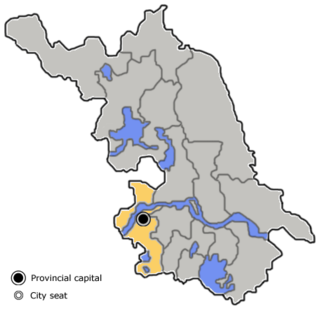
Nanjing, alternatively romanized as Nanking and Nankin, also known as Langjin in Nanjing dialect, is the capital of Jiangsu of the People's Republic of China and the second largest city in the East China region, with 11 districts,an administrative area of 6,600 km2 (2,500 sq mi) and a total population of 8,505,500 as of 2019. The inner area of Nanjing enclosed by the city wall is Nanjing City (南京城).
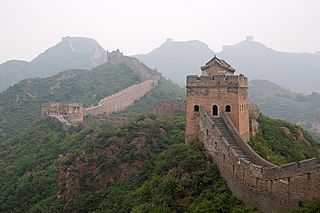
Hebei is a coastal province of the People's Republic of China, and is part of the North China region. The modern province was established in 1911 as Chihli Province. Its capital and largest city is Shijiazhuang. Its one-character abbreviation is "冀" (Jì), named after Ji Province, a Han dynasty province (zhou) that included what is now southern Hebei. The name Hebei literally means "north of the river", referring to its location entirely to the north of the Yellow River.

Rehe, also romanized as Jehol, was a former Chinese special administrative region and province.

Jiangsu is an eastern-central coastal province of the People's Republic of China. It is one of the leading provinces in finance, education, technology, as well as tourism, with its capital in Nanjing. Jiangsu is the third smallest, but the fifth most populous and the most densely populated of the 23 provinces of the People's Republic of China. Jiangsu has the highest GDP per capita of Chinese provinces and second-highest GDP of Chinese provinces, after Guangdong. Jiangsu borders Shandong in the north, Anhui to the west, and Zhejiang and Shanghai to the south. Jiangsu has a coastline of over 1,000 kilometres (620 mi) along the Yellow Sea, and the Yangtze River passes through the southern part of the province.
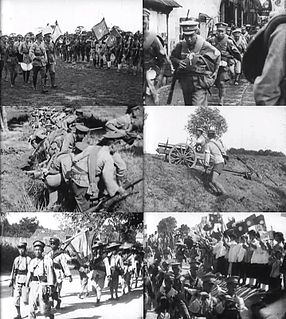
The Northern Expedition was a military campaign launched by the National Revolutionary Army (NRA) of the Kuomintang (KMT), also known as the "Chinese Nationalist Party", against the Beiyang government and other regional warlords in 1926. The purpose of the campaign was to reunify China, which had become fragmented in the aftermath of the Revolution of 1911. The expedition was led by Generalissimo Chiang Kai-shek, and was divided into two phases. The first phase ended in a 1927 political split between two factions of the KMT: the right-leaning Nanjing faction, led by Chiang, and the left-leaning faction in Wuhan, led by Wang Jingwei. The split was partially motivated by Chiang's purging of communists within the KMT, which marked the end of the First United Front. In an effort to mend this schism, Chiang Kai-shek stepped down as the commander of the NRA in August 1927, and went into exile in Japan.
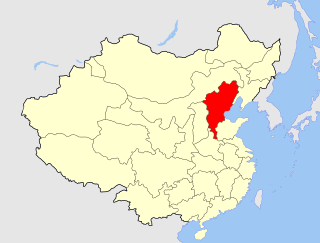
Zhili, alternately romanized as Chihli, was a northern province of China from the 14th-century Ming dynasty until the region was dissolved in 1911 and converted as a province and renamed as Hebei in 1928.
The history of the administrative divisions of the Imperial China is quite complex. Across history, what is called 'China' has taken many shapes, and many political organizations. For various reasons, both the borders and names of political divisions have changed—sometimes to follow topography, sometimes to weaken former states by dividing them, and sometimes to realize a philosophical or historical ideal. For recent times, the number of recorded tiny changes is quite large; by contrast, the lack of clear, trustworthy data for ancient times forces historians and geographers to draw approximate borders for respective divisions. But thanks to imperial records and geographic descriptions, political divisions may often be redrawn with some precision. Natural changes, such as changes in a river's course, or loss of data, still make this issue difficult for ancient times.

Wu refers to a region in China whose core area is around Lake Tai in Jiangnan. The Wu region was historically part of the ancient Yang Province in southeastern China. The name "Wu" came from the names of several historical kingdoms based in that area.

Jiangnan or Jiang Nan is a geographic area in China referring to lands immediately to the south of the lower reaches of the Yangtze River, including the southern part of its delta. The region encompasses the city of Shanghai, the southern part of Jiangsu Province, the southeastern part of Anhui Province, the northern part of Jiangxi Province and the northern part of Zhejiang Province. The most important cities in the area include Anqing, Changzhou, Hangzhou, Nanjing, Ningbo, Shaoxing, Suzhou, Wuxi, Wenzhou, and Zhenjiang.
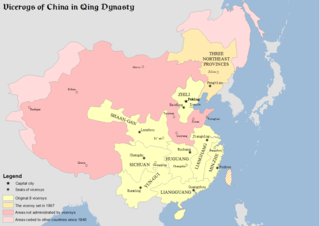
The Viceroy of Zhili, fully referred to in Chinese as the Governor-General of Zhili and Surrounding Areas Overseeing Military Affairs and Food Production, Manager of Waterways, Director of Civil Affairs, was one of eight regional Viceroys in China proper during the Qing dynasty. The Viceroy of Zhili was an important post because the province of Zhili, which literally means "directly ruled", was the area surrounding the imperial capital, Beijing. The administrative centre was in Tianjin even though the provincial capital was in Baoding. The Viceroy's duties as well as responsibilities have never been defined entirely. Generally speaking, the Viceroy oversaw the military and civil affairs of Zhili, Shandong and Henan provinces. The Viceroy of Zhili was also highly influential in imperial court politics.
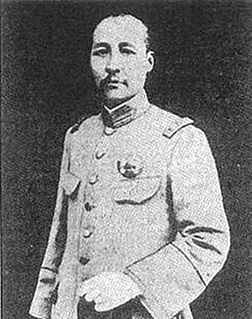
Sun Chuanfang a.k.a. the "Nanking Warlord" or leader of the "League of Five Provinces" was a Zhili clique warlord and protégé of the "Jade Marshal" Wu Peifu (1874–1939).

The Warlord Era was a period in the history of the Republic of China when control of the country was divided among former military cliques of the Beiyang Army and other regional factions from 1916 to 1928.

The Beiyang government, officially the Republic of China, also sometimes spelled Peiyang Government or the First Republic of China, refers to the government of the Republic of China which sat in its capital Peking between 1912 and 1928. It was internationally recognized as the legitimate Chinese government.
Nanjing means 'southern capital' and is the name of the current capital of Jiangsu Province and a former capital of China. It was formerly romanized as Nanking or Nankin.

Wang Kemin was a leading official in the Chinese republican movement and early Beiyang government, later noted for his role as in the collaborationist Provisional Government of the Republic of China and Wang Jingwei regime during World War II.

The Viceroy of Liangjiang or Viceroy of the Two Jiangs, fully referred to in Chinese as the Governor-General of the Two Yangtze Provinces and Surrounding Areas Overseeing Military Affairs, Provisions and Funds, Manager of Waterways, Director of Civil Affairs, was one of eight regional Viceroys in China proper during the Qing dynasty. The Viceroy of Liangjiang had jurisdiction over Jiangsu, Jiangxi and Anhui provinces. Because Jiangsu and Anhui were previously part of a single province, Jiangnan, they were thus known, along with Jiangxi, as the two jiangs, hence the name "Liangjiang".

"Beijing" is the atonal pinyin romanisation of the Mandarin pronunciation of the Chinese characters 北京, the Chinese name of the capital of China.
Jiangnan is a former province of China whose capital was Jiangning, which covered the land from north of the Huai River to south of the Yangtze River in East China. The province existed during early Qing dynasty and was divided into the provinces of Jiangsu and Anhui during the era of the Kangxi Emperor (1654–1722) and Qianlong Emperor (1736–1795) and ceased to exist since then.
The Northern Expedition was a failed campaign by the Taiping Heavenly Kingdom against the Qing dynasty during the Taiping Rebellion. Its purpose was to capture Beijing and then complete an encirclement of northern and western China. Launched in May 1853, the Northern Expedition would travel from Jiangsu to Zhili before being destroyed in early 1855.

The National Pacification Army (NPA), also known as the Anguojun or Ankuochun, was a warlord coalition led by Fengtian clique General Zhang Zuolin, and the military arm of the Beiyang government of the Republic of China.














